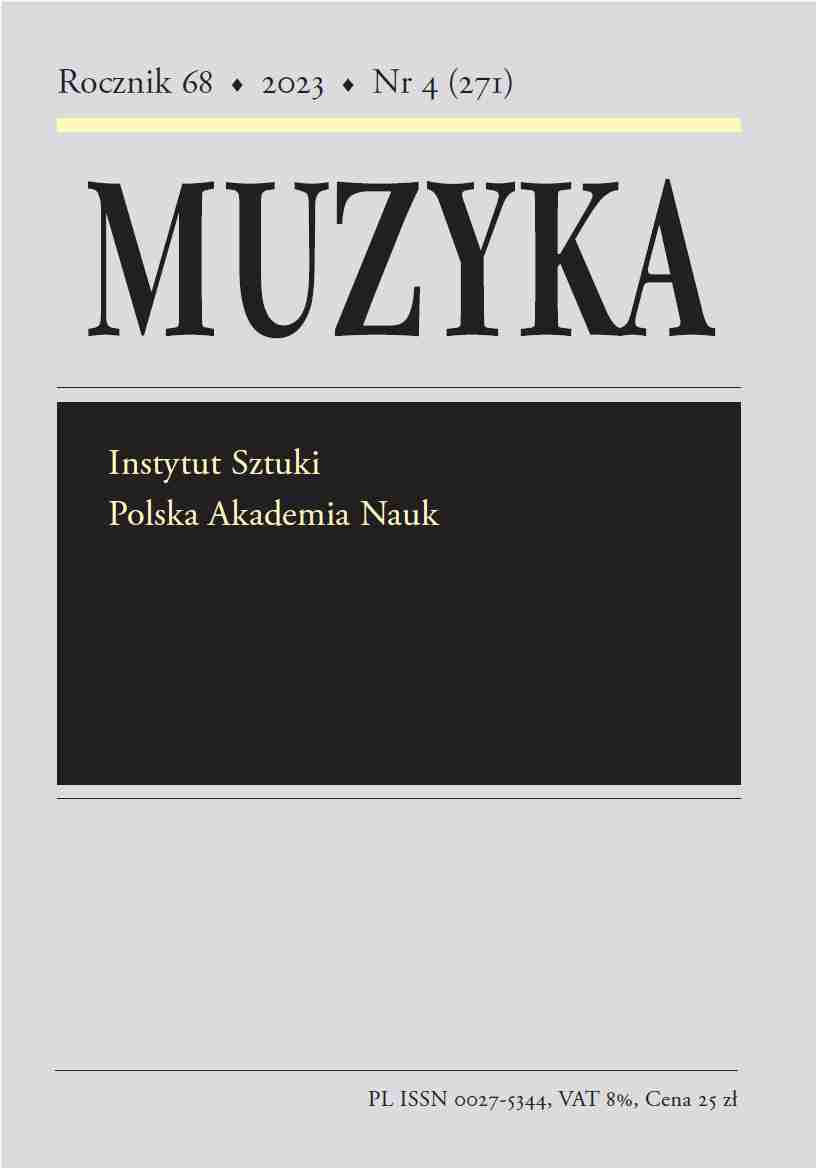Muzyka sceniczna Edvarda Griega do „Peera Gynta” w perspektywie historycznoteatralnej
Edvard Grieg’s Stage Music for ‘Peer Gynt’ in the Context of Theatre History
Author(s): Ewa PartygaSubject(s): Theatre, Dance, Performing Arts, Music
Published by: Instytut Sztuki Polskiej Akademii Nauk
Keywords: Edvard Grieg; Henrik Ibsen; Peer Gynt op. 23; incidental music; musical-theatrical genres; Norwegian music
Summary/Abstract: This article compares selected narratives from the fields of theatre and music history which interpret the role played by Edvard Grieg’s incidental music (Op. 23) for the world premiere of Henrik Ibsen’s Peer Gynt (1876) in the play’s reception and in establishing its importance.The first part deals with the collaboration between amateur and professional musical and theatrical circles that created Norwegian theatre as a place where national identity could be constructed, as well as the musical-theatrical traditions harnessed to that purpose, with particular focus on the popular syngespill genre. Also discussed is the musical experience that Ibsen accumulated over the ten years he spent working in the theatres of Bergen and Christiania, which influenced his expectations of Grieg.The second part is devoted to Grieg’s collaborations with the theatrical milieu in Christiania, while the third focuses on key aspects of the play’s premiere staging: a letter from Ibsen to Grieg attesting to the writer’s musical-theatrical imagination; a letter from Grieg to Johan Hennum, who conducted the first performance, as evidence of the composer’s care over the music’s theatrical effect; the role of Ludvig Josephson, an experienced director of operatic and musical-dramatic productions, who devised the overall concept of the premiere with the aim of attracting a wide audience. The last part describes the factors behind the performative openness and powerful impact of the music for Peer Gynt, which Grieg composed in many variants and which has functioned from the beginning in various contexts.The comparison of narratives from the history of theatre and music shows that new light can be cast on Grieg’s Peer Gynt – as an artistic work, a cultural phenomenon and the subject of scientific research – by research of an interdisciplinary character. The article is supplemented by an appendix containing a Polish translation of Ibsen’s letter to Grieg of 23 January 1874 (discussed in part two).
Journal: Muzyka
- Issue Year: 68/2023
- Issue No: 4
- Page Range: 53-74
- Page Count: 22
- Language: Polish

